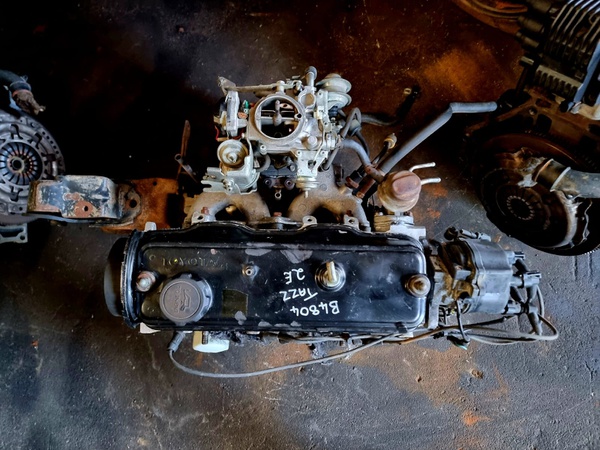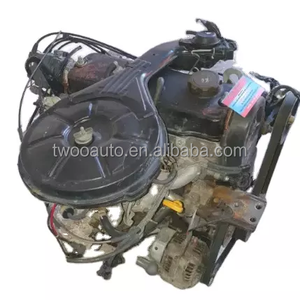Toyota Tazz: Essential Maintenance Tips to Keep Your Car Running Smoothly
Toyota Tazz: Essential Maintenance Tips to Keep Your Car Running Smoothly
Blog Article
Check Out the most up to date Patterns in Engine Innovation Via Tazz
In the rapidly progressing landscape of automotive technology, Tazz stands at the leading edge, highlighting substantial innovations in engine systems that prioritize both development and sustainability. tazz. From hybrid engines that enhance gas performance to the appearance of hydrogen fuel cells, the patterns forming modern-day powertrains are not just boosting efficiency yet additionally addressing critical ecological difficulties. As the industry remains to press borders, it is necessary to think about how these advancements will certainly affect future transport solutions and the wider effects for worldwide power consumption. What lies in advance in this crucial change?
Hybrid Engine Innovations
Crossbreed engine advancements stand for an essential change in auto modern technology, combining the advantages of internal combustion engines with electric propulsion systems. This assimilation not just improves gas efficiency yet likewise reduces discharges, conference significantly strict environmental laws. By using both power resources, hybrid engines can optimize performance, providing power when needed while preserving gas during much less requiring motoring problems.
Recent improvements in crossbreed innovation consist of enhancements in battery efficiency and regenerative braking systems. These advancements permit greater energy recovery during slowdown, which can be redirected to assist in velocity or power auxiliary systems. Suppliers are concentrating on small styles and light-weight products to maximize the effectiveness of hybrid powertrains.
The development of plug-in hybrids has actually likewise expanded the market, enabling vehicle drivers to bill their vehicles using standard electrical outlets. This function typically permits substantial all-electric variety, further reducing dependancy on typical fuels. tazz. As the auto market proceeds to advance, hybrid engine innovations are anticipated to play a critical function in bridging the space in between traditional cars and fully electric models, providing a transitional option that deals with varied customer demands and choices
Developments in Electric Powertrains
The automotive landscape is rapidly evolving, with electrical powertrains emerging as a leading pressure in lasting transportation. Breakthroughs in electrical lorry (EV) technology are significantly enhancing efficiency, efficiency, and individual experience. Key innovations consist of enhancements in battery chemistry, which have increased power density, decreased billing times, and prolonged general battery life.
Solid-state batteries, for example, promise to change the market by giving higher safety and performance compared to typical lithium-ion cells. Moreover, improvements in regenerative braking systems are making it possible for cars to recoup energy throughout slowdown, contributing to total efficiency.
Along with battery innovation, electrical motor designs are ending up being extra sophisticated. Advancements such as incorporated motors and advanced thermal monitoring systems are helping to optimize power shipment and minimize weight, inevitably enhancing car characteristics.

Jointly, these breakthroughs highlight the dedication to change towards cleaner, a lot more reliable transportation solutions, positioning electric powertrains at the forefront of automobile innovation.
The Surge of Hydrogen Fuel Cells
Progressively, hydrogen gas cells are gaining traction as a practical option to standard inner combustion engines and battery electric cars. This technology utilizes the chemical read power kept in hydrogen, converting it into electricity via an electrochemical response with oxygen. The primary by-product of this procedure is water, making hydrogen fuel cells an eco-friendly choice with no emissions at the tailpipe.

Car manufacturers are increasingly purchasing hydrogen gas cell modern technology, recognizing its potential for long-range applications and fast refueling capacities that measure up to traditional gas. In addition, fields such as heavy-duty transport and public transit are especially appropriate for hydrogen gas cells, where battery electrical remedies might drop short as a result of weight and variety limitations.
As research study and financial investment proceed to increase, hydrogen gas cells are positioned to play a substantial duty in the future landscape of tidy transport and power remedies.
Enhancements in Internal Burning Engines
Technologies in internal combustion engine (ICE) technology are transforming traditional vehicles to meet modern-day ecological criteria and efficiency assumptions. One of the most significant enhancements includes the integration of advanced gas shot systems. These systems enhance the air-fuel blend, enhancing combustion efficiency and causing lowered exhausts. Direct fuel shot, for instance, enables for better atomization of gas, bring about even more total combustion and boosted power result.
Additionally, turbocharging has obtained prominence, permitting smaller sized engines to deliver greater performance without the weight of larger engines - tazz. This innovation not only enhances effectiveness but likewise adds to reduce fuel intake. Variable valve timing systems are additionally being refined, making it possible for engines to adapt to numerous driving conditions for enhanced torque and responsiveness
Furthermore, making use of lightweight products in engine building is coming to be common, further improving gas effectiveness by lowering overall automobile weight. Engine see it here control units (ECUs) are progressively innovative, enabling real-time modifications that enhance performance and emissions.
These improvements collectively represent a crucial shift in ICE innovation, lining up with international sustainability goals while still offering the efficiency vehicle drivers get out of their vehicles. As the market progresses, these improvements proceed to shape the future of conventional vehicle design.
Future Fads in Engine Efficiency
Significant improvements in engine efficiency are expected as makers concentrate on incorporating cutting-edge technologies to satisfy strict environmental guidelines and customer needs. The shift in the direction of electrification, crossbreed systems, and alternate gas is improving the auto landscape, driving technologies that boost gas economic situation and reduce emissions.
Among the vital fads is the execution of innovative products and producing methods. High-strength alloys and lightweight composites add to lowered lorry weight, hence enhancing general efficiency. Additionally, the fostering of turbocharging and variable shutoff timing innovations permits improved power output from smaller sized engines, additionally improving fuel economy.

Verdict
Developments in hybrid engine systems, electrical powertrains, and hydrogen gas cells show a commitment to minimizing discharges while enhancing performance. my link Enhancements in interior combustion engines and an emphasis on lightweight materials add to total engine efficiency.
From crossbreed engines that maximize gas performance to the emergence of hydrogen fuel cells, the fads forming modern powertrains are not only enhancing efficiency but additionally resolving vital environmental difficulties.Hybrid engine innovations represent a pivotal change in auto technology, combining the advantages of inner burning engines with electrical propulsion systems.Additionally, turbocharging has gotten importance, allowing smaller engines to deliver higher performance without the weight of larger engines. Furthermore, the adoption of turbocharging and variable valve timing technologies allows for enhanced power outcome from smaller engines, even more improving fuel economic climate.
Enhancements in interior combustion engines and an emphasis on light-weight products add to overall engine efficiency.
Report this page